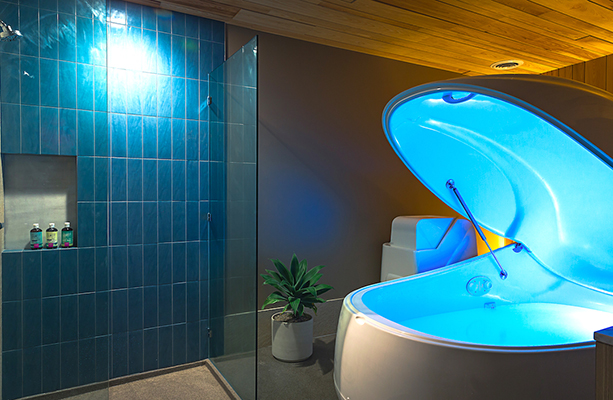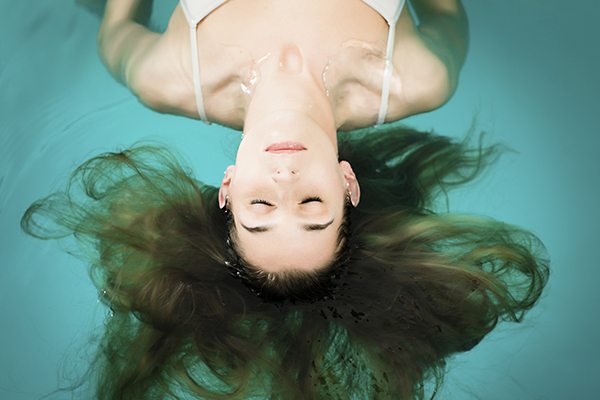Let’s play a game of “Would You Rather”:
Would you rather …
… spend 90 minutes getting a deep-tissue massage…
or
… spend 90 minutes floating in a soundproof tank of water in the pitch dark?
Before you answer, I fully acknowledge that floating, or float therapy, encompasses pretty much everyone’s childhood fears: the dark, water, being in the dark… in water. But...
https://www.teambeachbody.com/teambeachbodyblog/lifestyle/8-reasons-to-try-flotation-tank-therapy?referringRepId=28870
Flotation Tank Therapy
as someone who was (and still is) afraid of those things, I can tell you that floating is just as good as a massage.

What is Floating?
Back in the day, floating took place in sensory deprivation tanks for science experiments, not for relaxation. Research on the effects and benefits of sensory deprivation have been ongoing since the ’50s, starting with the work of neuroscientist
John C. Lilly. He created the original sensory deprivation tank and preferred dropping acid before he floated. (Don’t do that.)
In the ’70s,
Dr. Peter Suedfeld and
Dr. Roderick Borrie came up with the less ominous descriptor “
Restricted Environmental Stimulation Therapy,” or REST. Far from being some hippy-dippy, way-out-there fringe subject, there are
numerous studies on REST and its effect on hypertension, chronic pain, addictive behaviors, weight loss, and more.
Nowadays, people float for a variety of reasons and its popularity is growing rapidly: The number of float therapy studios in the U.S. has grown from about 50 five years ago to more than 250 studios today, says Jeff Ono, founder of
Pause float studio in Los Angeles.
What Does Floating Feel Like?
There are two common types of tanks or pods: the “clamshell,” which looks like a gigantic plastic egg with a hinged top and the walk-in tanks for all you claustrophobic types.
Once you’re in the tank, floating in hundreds of pounds of Epsom salts dissolved in hot water creates a trippy, yet soothing experience: The salts keep you bobbing on the surface and body-temperature water helps you lose any sense of being “in” water. The effect can be disorientating at first, but then you actually feel like you’re floating in space.
It took me awhile to truly relax on my very first float; I worried about getting saltwater up my nose, bumping into the walls, being trapped in the tank (none of which happened). But once I got settled, the complete lack of sound, light, and distractions was hypnotic. After awhile, I’m pretty sure I fell asleep. While floating in water. Beat that, deep-tissue massage.

Here are 8 reasons to try flotation tank therapy:
1. Floating
really is getting away from it all. How many times have you been told how important it is to make time for yourself? Probably a lot. And how many times have you been interrupted by phone calls or texts or doorbells or kids when you try to do just that? On the other hand, it’s hard for someone to text you or ask you for something if you’re floating naked in closed tank of water.
2. Floating is all about you. You’re in control. You control everything about your float: the lights, no lights, music, no music. If you want to get up and walk around in the middle of your session, you can. If you want to paddle around in circles, you can. It’s all you.
3. Floating is fun. I tend to sink right to the bottom of any body of water that I get into, so the sensation of floating on water is pretty groovy. It can take a few minutes for your body to relax into the water, but once you do, you feel absolutely weightless.
4. Floating may be physically and
mentally therapeutic. Preliminary studies suggest it may help with a host of issues, from
insomnia to
headaches. Other studies have shown that float therapy may help reduce
stress-related pain and
anxiety.
More and more alternative therapies like
cupping and floating are going mainstream: Elite Olympians and athletes like
gymnast Aly Raisman and the entire
Golden State Warriors lineup are fans of floating to recover physically and mentally.
But you don’t have to be a professional athlete to reap the benefits. “Floating eliminates muscle soreness, reduces my join point and relieves pressure in my head, and headaches vanish,” Ono says. “As I age, the amount of time I spend hunched over a desk is growing, so I carry a lot of discomfort in my back. Floating releases this tension. It is almost as if my back has been actively stretched during the session.”
5. Floating helps your brain turn off. OK, this one is clearly not a science-backed claim, but I can vouch for the fact I wasn’t thinking about
anything when
I was in the tank. Not about my to-do lists, what to make for dinner, how much those new tires are going to cost — nothing. It was glorious to just
be. (Although, technically, thinking about the fact you’re “not thinking” is, well, thinking, but you get my drift.)
6. Floating may spark your creative juices. Small studies show that participants displayed more creativity after a REST session. “When I come out of the pod and read, I absorb everything. Creatively, it enhances my imagination as well as my memory,” Ono says.
7. Floating will turn your skin as smooth as a baby’s butt. Again, not scientifically proven, but anecdotally, I can attest to the fact that my skin and hair were silky smooth post-float.
8. Floating is what you make of it. That’s the beauty of float therapy: Some people float for physical recovery, for a meditative or spiritual experience, but if that’s not what you’re into, you can float simply to relax and take some time for yourself.
3 Float Mistakes You Do Not Want to Make
– Don’t shave, get a tattoo, or otherwise have unhealed scratches or cuts. Salt water in an open wound = bad.
– Don’t drink lots of liquids beforehand. (Enough said.)
– Do not, I repeat, do
not rub your eyes once you’re in the tank. Seriously. Salt water in your eyeballs is almost, if not more painful, than salt water in an open wound.
Floating may not be for everyone, but in an increasingly plugged-in, turned-on world, it’s more important than ever to find different ways to give body and your brain a break to recharge.
Photos courtesy Pause float studio.

